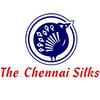Filter interviews by
YKK Process Engineer Interview Questions and Answers
7 Interview questions
Six Sigma is a data-driven methodology used to improve processes by reducing defects and variations.
Six Sigma aims to achieve near perfection in processes by identifying and eliminating causes of defects or errors.
It involves statistical analysis, process mapping, and continuous improvement techniques.
Six Sigma uses a set of quality management methods, including DMAIC (Define, Measure, Analyze, Improve, Control) a...
Wrinkle problem refers to the occurrence of wrinkles or creases in a material, often caused by improper processing or handling.
Wrinkle problems can occur in various materials such as plastics, fabrics, or paper during manufacturing processes.
Common causes of wrinkle problems include improper tension control, inadequate drying or curing time, or incorrect temperature settings.
Examples of wrinkle problems include cr...
Kaizen is a Japanese term meaning continuous improvement. It involves making small, incremental changes to processes in order to improve efficiency and quality.
Kaizen focuses on involving all employees in the improvement process
It emphasizes making small, gradual changes rather than large, disruptive ones
Kaizen is a key principle of lean manufacturing and Six Sigma methodologies
Examples of kaizen include implement...
OEE (Overall Equipment Effectiveness) is a measure of how well a manufacturing process is performing.
OEE is calculated by multiplying Availability, Performance, and Quality percentages.
Availability measures the percentage of time the equipment is running during planned production time.
Performance measures the speed at which the equipment is running compared to its maximum speed.
Quality measures the percentage of g...
Veving problem refers to a common issue in weaving processes where the fabric pattern is not aligned properly.
Veving problem can occur due to incorrect warp or weft tension.
It can also be caused by misalignment of the weaving machine.
Examples include misaligned stripes or patterns in the fabric.
Man power handling refers to the management and coordination of human resources within a process or organization.
Man power handling involves assigning tasks, monitoring progress, and ensuring efficiency in the use of human resources.
It includes managing work schedules, resolving conflicts, and providing training and support to employees.
Examples of man power handling in a process engineering role could include coo...
4m and 3m are abbreviations for different types of process analysis tools used in manufacturing.
4m stands for Man, Machine, Material, and Method - used to analyze potential causes of a problem in manufacturing processes.
3m stands for Man, Machine, and Method - used to analyze the efficiency of a manufacturing process.
These tools help identify areas for improvement and optimization in manufacturing processes.
YKK Process Engineer Interview Experiences
1 interview found
I applied via Naukri.com and was interviewed in Aug 2023. There were 3 interview rounds.

(8 Questions)
- Q1. What is this kaizen
- Ans.
Kaizen is a Japanese term meaning continuous improvement. It involves making small, incremental changes to processes in order to improve efficiency and quality.
Kaizen focuses on involving all employees in the improvement process
It emphasizes making small, gradual changes rather than large, disruptive ones
Kaizen is a key principle of lean manufacturing and Six Sigma methodologies
Examples of kaizen include implementing 5...
- Q2. What's is this 5s and TPM
- Ans.
5s and TPM are methodologies used in manufacturing to improve efficiency and productivity.
5s stands for Sort, Set in order, Shine, Standardize, Sustain. It is a method for organizing the workplace to improve efficiency and safety.
TPM stands for Total Productive Maintenance. It is a method for maximizing the effectiveness of equipment by involving all employees in the maintenance process.
Both 5s and TPM are commonly use...
- Q3. What is this oee calculation
- Ans.
OEE (Overall Equipment Effectiveness) is a measure of how well a manufacturing process is performing.
OEE is calculated by multiplying Availability, Performance, and Quality percentages.
Availability measures the percentage of time the equipment is running during planned production time.
Performance measures the speed at which the equipment is running compared to its maximum speed.
Quality measures the percentage of good p...
- Q4. What is this 4m and 3m
- Ans.
4m and 3m are abbreviations for different types of process analysis tools used in manufacturing.
4m stands for Man, Machine, Material, and Method - used to analyze potential causes of a problem in manufacturing processes.
3m stands for Man, Machine, and Method - used to analyze the efficiency of a manufacturing process.
These tools help identify areas for improvement and optimization in manufacturing processes.
- Q5. What's is this 6 sigma
- Ans.
Six Sigma is a data-driven methodology used to improve processes by reducing defects and variations.
Six Sigma aims to achieve near perfection in processes by identifying and eliminating causes of defects or errors.
It involves statistical analysis, process mapping, and continuous improvement techniques.
Six Sigma uses a set of quality management methods, including DMAIC (Define, Measure, Analyze, Improve, Control) and DM...
- Q6. What is this man power handling
- Ans.
Man power handling refers to the management and coordination of human resources within a process or organization.
Man power handling involves assigning tasks, monitoring progress, and ensuring efficiency in the use of human resources.
It includes managing work schedules, resolving conflicts, and providing training and support to employees.
Examples of man power handling in a process engineering role could include coordina...
- Q7. What's are you main powe reduced
- Q8. Goods knowledge basic maintenance
(2 Questions)
- Q1. What is this veving problem
- Ans.
Veving problem refers to a common issue in weaving processes where the fabric pattern is not aligned properly.
Veving problem can occur due to incorrect warp or weft tension.
It can also be caused by misalignment of the weaving machine.
Examples include misaligned stripes or patterns in the fabric.
- Q2. What's is this wrinkle problem
- Ans.
Wrinkle problem refers to the occurrence of wrinkles or creases in a material, often caused by improper processing or handling.
Wrinkle problems can occur in various materials such as plastics, fabrics, or paper during manufacturing processes.
Common causes of wrinkle problems include improper tension control, inadequate drying or curing time, or incorrect temperature settings.
Examples of wrinkle problems include creases...
Interview Preparation Tips
Top trending discussions






Interview questions from similar companies

Process Engineer Interview Questions & Answers
Raj Process Equipments And Systemposted on 20 Sep 2024
I appeared for an interview before Sep 2023.
(2 Questions)
- Q1. What is NPSH and explain details.
- Ans.
NPSH stands for Net Positive Suction Head, a measure of the pressure available at the suction port of a pump.
NPSH is important for ensuring that a pump does not cavitate, which can damage the pump and reduce efficiency.
It is calculated by subtracting the vapor pressure of the liquid from the total suction head.
NPSH is typically provided by the pump manufacturer and must be greater than the required NPSH for the pump to...
- Q2. Different types of pump.
- Ans.
Different types of pumps include centrifugal pumps, positive displacement pumps, and diaphragm pumps.
Centrifugal pumps use a rotating impeller to create flow and increase pressure.
Positive displacement pumps move fluid by trapping a fixed amount and forcing it through the discharge.
Diaphragm pumps use a flexible diaphragm to create suction and discharge fluid.

(1 Question)
- Q1. Details about plant operations

Process Engineer Interview Questions & Answers
Valdel Engineers & Constructorsposted on 22 Jun 2024
I applied via Campus Placement and was interviewed before Jun 2023. There were 2 interview rounds.
Simple apptitude and chemical engineering basic questions
(1 Question)
- Q1. Question on fluide mechanics and mass transfer
Interview Preparation Tips

I applied via Campus Placement and was interviewed before Nov 2023. There were 2 interview rounds.
(2 Questions)
- Q1. Pythagorus theorem
- Ans.
Pythagoras theorem states that in a right-angled triangle, the square of the hypotenuse is equal to the sum of the squares of the other two sides.
In a right-angled triangle, the side opposite the right angle is called the hypotenuse.
The theorem can be written as a^2 + b^2 = c^2, where a and b are the other two sides and c is the hypotenuse.
This theorem is commonly used in engineering and physics to calculate distances ...
- Q2. Basic maths question
(1 Question)
- Q1. Past experiences in the domain
Interview Preparation Tips

(1 Question)
- Q1. Mechanical basic question
Interview Preparation Tips

Process Engineer Interview Questions & Answers
Saurashtra Chemicalsposted on 8 Jun 2024
Distance & time
Blood relation
Directions
Numbers relation
(2 Questions)
- Q1. Heat exchanger design
- Ans.
Heat exchanger design involves selecting the appropriate type, size, and materials to efficiently transfer heat between two fluids.
Consider the type of heat exchanger needed (e.g. shell and tube, plate heat exchanger)
Calculate the required heat transfer area based on heat load and temperature difference
Select materials compatible with the fluids and operating conditions
Optimize flow rates to maximize heat transfer effi...
- Q2. Distillation,pumps,packed columns, packings, pump curve, boiling point diagram,Heat & material balance
Interview Preparation Tips

Process Engineer Interview Questions & Answers
Kanoria Chemicals & Industriesposted on 9 May 2024
I appeared for an interview before May 2023.
(6 Questions)
- Q1. Surface kinetics
- Q2. Pressure drop in absorption and reactor
- Ans.
Pressure drop in absorption and reactor is influenced by flow rate, viscosity, temperature, and equipment design.
Pressure drop in absorption is affected by gas flow rate, liquid flow rate, and contact area.
In a reactor, pressure drop is influenced by reactor size, catalyst activity, and reaction kinetics.
Higher flow rates and viscosities generally result in higher pressure drops.
Temperature changes can also impact pres...
- Q3. Exothermic reaction and temperature dependence
- Q4. Material balances
- Q5. Pumps power calculations
- Q6. Work permit system and ISO
Interview Preparation Tips

Process Engineer Interview Questions & Answers
Sahajanand Medical Technologiesposted on 10 Jun 2024
I applied via Referral and was interviewed before Jun 2023. There were 2 interview rounds.
About Myself, Basic Mechanical Engineering
(1 Question)
- Q1. Questions followed from the 1st round after brushing up topics
Interview Preparation Tips

Process Engineer Interview Questions & Answers
DCM Shriram Industriesposted on 16 Apr 2025
I appeared for an interview before Apr 2024, where I was asked the following questions.
- Q1. Safety questions
- Q2. Process of current company
- Ans.
The process at my current company focuses on optimizing production efficiency and ensuring quality control.
Utilize Lean Manufacturing principles to minimize waste and improve workflow.
Implement Six Sigma methodologies to enhance product quality and reduce defects.
Conduct regular process audits to identify areas for improvement.
Collaborate with cross-functional teams to streamline operations and enhance communication.
Us...
YKK Interview FAQs
Tell us how to improve this page.
YKK Interviews By Designations
- YKK Assistant Engineer Interview Questions
- YKK Japanese Interpreter Interview Questions
- YKK Assistant Manager Interview Questions
- YKK Process Engineer Interview Questions
- YKK Interviewer Interview Questions
- YKK Executive Interview Questions
- YKK Team Manager Interview Questions
- YKK Production Engineer Interview Questions
- Show more
Interview Questions for Popular Designations
- Senior Engineer Interview Questions
- Production Engineer Interview Questions
- Project Engineer Interview Questions
- Junior Engineer Interview Questions
- Associate Engineer Interview Questions
- Graduate Engineer Interview Questions
- Shift Engineer Interview Questions
- Senior Process Engineer Interview Questions
- Show more
Overall Interview Experience Rating
based on 1 interview experience
Difficulty level
Duration
Interview Questions from Similar Companies
YKK Process Engineer Reviews and Ratings
based on 14 reviews
Rating in categories
|
Assistant Engineer
215
salaries
| ₹1.2 L/yr - ₹3.5 L/yr |
|
Process Engineer
53
salaries
| ₹2.7 L/yr - ₹7.2 L/yr |
|
Production Engineer
50
salaries
| ₹2.5 L/yr - ₹6.5 L/yr |
|
Senior Executive
44
salaries
| ₹3.8 L/yr - ₹10 L/yr |
|
Assistant Trainee Engineer
32
salaries
| ₹1.5 L/yr - ₹2.4 L/yr |

Monte Carlo

Safari Industries India

Van Heusen

Uniqlo
- Home >
- Interviews >
- YKK Interview Questions















